Sony Xperia Z2 vs Samsung Galaxy S5
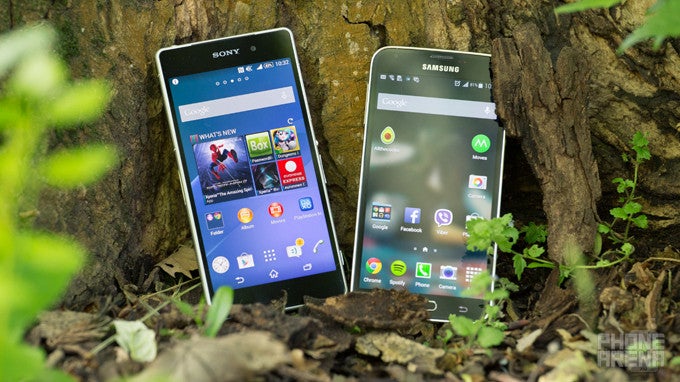
Introduction
Ladies and gentlemen, we're now five months into the year, and we can declare the 2014 edition of the flagship derby in full swing. Arriving third on the scene is Sony's refresh of the Xperia Z1 in the Xperia Z2, and despite it being chock-full of promise, the competition is not about to let it have a field day.
Prime among the Z2's rivals is Samsung's equally solid new Galaxy S5. Truth be told, Samsung's new top shelfer has quite a bit going for it. Which is all the more reason to be impressed by the Z2, which seemingly has a leg up on it. At least on paper. Indeed, the flagship Xperia has the slightly more remarkable body and the slightly bigger screen, battery, and pixel count on its camera. Does that necessarily make the Xperia Z2 the slightly better device? Take them eyes off that specs chart and join us in order to find out.
Design
The Z2's rectangular and clear-cut, glass-and-metal body looks nothing like the S5's more-ergonomic, rounded plastic.
Design-wise, Sony and Samsung have taken two differing approaches, and even a cursory glance reveals them. Rectangular in nature, the Xperia Z2 is the bulkier of the two, and is on the heavy side at 163 grams (5.75 oz). In comparison, the 145 gram (5.11 oz) Galaxy S5 is more lightweight, and its rounded form factor makes it the, hands down, more ergonomic device to hold. That said, the S5's all-plastic exterior appears modest next to the glass-and-metal Z2.
A choicer pick of materials may not have necessarily been on the mind of Samsung, but it did borrow a page off Sony's book: IP certification. More specifically, the IP67-rated S5 is now neck-and-neck with the IP58-certified Z2 in what is becoming an increasingly sought-after department. Put in layman's terms, the two otherwise cryptic abbreviations certify the two devices' ability to withstand dust or water ingress. It's worth pointing out that the S5 is completely dust-tight, while the Z2 is the slightly better swimmer. Of course, this back-and-forth didn’t stop there, and the port flaps-cluttered Z2 still is a bit of a sore sight for the eye, whereas the S5 sports the more simplistic, flaps-free frame (save for the microUSB port). The S5 also proves superior as far as navigating the power and volume buttons go – they’re clickier, and not as sticky as with the Z2 – though it does lack the dedicated, two-step shutter key of Sony’s flagship.
Lastly, while the Xperia Z2 opts for on-screen buttons, Samsung’s signature home button and capacitive keys leave the full 5.1-inches of the S5’s AMOLED screen for you to do with as you will. Speaking of displays…
Display
Sony is finally doing it: the Xperia Z2's IPS panel proves a step ahead of the AMOLED panel on the Galaxy S5.
Looking back, both Sony and Samsung have had a shaky record, at least as far as the quality of their displays is concerned. For its part, Sony kept insisting on using inferior TFT panels with poor viewing angles and washed out colors, while Samsung's bet with AMOLEDs has often been criticized for its inaccurate color reproduction and relatively low peak brightness. As almost every other thing in this industry, however, improvements have been made.
Starting with the 5.2-inch, 1080p screen on the Xperia Z2, we finally see Sony thaw and adopt IPS (In-Plane Switching) tech. The panel in question has a very good color temperature of 6909 K (so whites appear white), and peak brightness, at about 460 nits, is also up to speed and allows for outdoors use. At 2.59, gamma isn't as excellent, but that's far from a deal-breaker. Speaking of colors, those are over-saturated on the whole, but overall reproduction is acceptable.
In comparison, the 5.1-inch, 1080p AMOLED display on the S5 is, strictly speaking, a tad inferior. It's got a cold color temperature of 8183 K, and this leads to some notably bluish whites and messed up shades of gray. Peak brightness is also a notch lower, at 442 nits (but still enough for use outside), and gamma, at 2.25 is pretty spot on. As for color reproduction, Samsung's panel offers heavily-saturated and notably incorrect colors.
Interface and functionality
Two markedly different skins: Sony's Xperia theme feels downright restrained when compared with Samsung's TouchWiz, which goes full-out with customization options.
The differences in design between Sony and Samsung aren't just limited to the outer shell of their new flagships – the custom interface and the functionality it offers is also governed by two very distinct (and contrasting) philosophies. In simple terms, it wouldn't be objectively wrong to say that Sony has a more restrained and simplistic approach that weeds out the extra fluff and discards it. In contrast, more is better with Samsung, and even more is best. And these competing philosophies are not confined to just functionality – they, naturally, govern the resulting software design, too.
Based on the latest Android 4.4.2 KitKat update, the Xperia Z2 is rather minimally-skinned. The overlay is distinct, sure, but it is nicely tailored around the core principles of stock Android, and its underlying functionality. Essential apps, like the Phonebook, Organizer and Messenger, have a minimal and uniform look. Sony has only added on top where it felt is absolutely needed – like easier homescreen editing and extra themes, or even the so-called Small Apps (mini versions of apps) or some extras for the multimedia department. These include xLOUD, which boosts volume levels, and the ClearAudio+ equalizer preset.
Looking at Samsung's TouchWiz-skinned take on Android 4.4.2 KitKat, the different approach is hard to miss. The software is chock-full with extra features, and the Settings menu is downright overwhelming. That said, we've gotta say that the otherwise cartoonish overlay has gone through a very positive design update, though we're not blind to some leftover inconsistencies.
In any case, there can be no doubt that the Samsung Galaxy S5 is the undisputed winner in terms of functionality here, especially when you consider extras like the generally-reliable fingerprint scanner, or even the somewhat puzzling heart rate monitor. Beyond those two, apps like S Health, and perks like the well-made (but hard to launch) one-handed mode, are well-received. That said, and this is important, you do have to keep in mind that a big part of these extras will either not make it into your daily routine, or are available through third-party apps off the Play Store.
Processor and memory
More RAM, or a slightly better processor – that's what it comes down to here. Luckily, there are no wrong answers.
If you would pry open either of these two flagships, the sight below is unlikely to disappoint even the most exacting of you. True to their 2014 flagship title, both the Xperia Z2 and Galaxy S5 are packing some serious silicon muscle. That said, there are some differences between the two.
Packing a 2.3GHz, quad-core Snapdragon 801 (MSM8974-AB), Sony's flagship packs the slightly less powerful Qualcomm chip of the two, with the slower cores and GPU. In comparison, the Galaxy S5's 2.5GHz, quad-core Snapdragon 801 (MSM89740-AC) is Qualcomm's top of the line bin of the chip, and offers a small performance edge. On the other hand, the S5's otherwise healthy 2 gigs of RAM are not quite as healthy as the 3GB unit packed in the Z2.
And yet, beyond rehashing technicalities, and even beyond the slight disbalances between the two, both devices offer no-compromise performance in general, though the TouchWiz software on Samsung's phone is more prone to hiccups when navigating around the interface.
Internet and connectivity
Flagship-worthy and frills-free web browsing; chock-full connectivity arsenals.
Sony is among the only mainstream manufacturers to offer just Google’s Chrome browser out of the box with its phones, and we can say we’re happy to see such an approach. As always, Chrome performs up to standard, and browsing on the Xperia Z2’s 5.2-inch display is a pure pleasure – load times are industry-leading, and navigation is smooth as butter.
But such dismissal of OEM browsers doesn’t do Samsung’s proprietary Browser app justice. Sure, the Galaxy S5 does also come with Chrome pre-loaded, but we’ve found that the company’s in-house solution is quite the performer, too. Once again, we have top-of-the-line browsing experience with the Galaxy S5, and we’re honestly unable to produce a winner here. Good stuff!
On another note, connectivity options are also quite plentiful with these two top shelfers. Indeed, both devices offer Cat 4 LTE speeds of up to 150Mbit/s downlink. We again have a stalemate in regions without LTE, as both handsets have a back-up HSPA+ capable radio for theoretical peak speeds of up to 42.2Mbit/s. In addition, the usual stack – Bluetooth 4.0, A-GPS, NFC – are available to both, though the Xperia Z2 does offer the slightly more interesting, 802.11 a, b, g, n, n 5GHz, ac Wi-Fi protocol (no 5GHz for the S5). On the other hand, the S5 does come with the unique Download Booster feature, which allows the handset to merge Wi-Fi and LTE speeds into a singular force of movie-downloading-bonanza.
Camera
We generally found the 16-megapixel snapper on the S5 to be superior to the 20.7-megapixel unit on the Z2. It is the slightly more reliable shooter, and it churns out the slightly more attractive stills overall.
Well, well, well! Finally the plot thickens. By all current standards, both the Xperia Z2 and the Galaxy S5 are no joke when it comes to imaging, as the two pack some serious configurations. For its part, Sony's flagship sports one of the largest sensors in a smartphone camera: 1/2.3'', or large enough to house the whopping 20.7 million, 1.1-micron large pixels. The 27mm G Lens' aperture of f/2.0 is also pretty wide, theoretically allowing more light to enter the sensor at any given time. In comparison, the Galaxy S5 features a slightly less incredible-sounding, 1/2.6'' sensor with 16 megapixels and 31mm lens with narrower, f/2.2 aperture.
Starting with the Xperia Z2, we have the more simplistic user interface of the two – controls are mostly intuitive and there aren't as many options as with the cluttered interface of the Galaxy S5. Both devices also come with a number of shooting modes, like Background Defocus (Z2) or Selective Focus (S5), both of which offer fake bokeh effect. So far, so good. But what about the results these impressive snappers produce?
Looking at Sony's new flagship, we see a lot that we like, though we don't necessarily feel the Z2 introduced any significant improvements over its predecessor. Snaps when light is abundant are great on the whole and have natural colors with a tinge of over-saturation. Sony's default Superior Auto mode shoots 8-megapixel stills instead of 20.7-megapixel ones as you might expect, but the extra resolution isn't exactly wasted. Rather, the software resizes and enhances images in order to arrive at a finer-looking still and to also allow for some lossless zooming. What's more, Superior Auto is a very good judge of the composition in front of it for the most part, and rarely mucks up imperative variables such as proper exposition. Images are pleasantly sharp, and noise levels are perfectly acceptable.
As for Samsung's phone, we definitely see an evolutionary step forward with the Galaxy S5. Color reproduction is quite realistic, and the snapper captures some very detailed and dynamic shots that are very attractive to look at. Samsung's Auto mode churns out much bigger, 16-megapixel snaps, and is also consistently arriving at a proper verdict as far as judging the scene goes. This means that variables like exposure and shutter speed are properly set.
Indoors, in lower light, the two phones act rather differently. The Z2, for its part, fires the flash more often than the S5, which leads to comparatively colder (bluish) shots with washed out colors. This is especially noticeable when the Xperia's stills are put next to the more naturally-toned snaps from the S5. However, in low light, when both phones use their flashes, the Z2 gains an edge, with better overall color. In those scenarios, the snaps produced by the S5 exhibit a visible blue fringing.
A stroll through the video capture department yields equally satisfying results with both devices, though there are some nuances. Perhaps most importantly, both devices deliver properly-exposed clips with natural color reproduction and consistently high frame rate, though we did feel the Z2's samples were just a tad more lifeless, and especially when light wasn't as abundant. That said, the Z2's microphone does a great job of capturing lower frequencies – a field in which the S5's underperforms. Lastly, both devices support 4K video capture, and can even shoot slow-moes in 720p at 120 frames per second.
Multimedia
Full-fledged multimedia hubs for on-the-go consumption.
We found both the Z2 and the S5 to be perfectly reasonable for on-the-go media consumption. Their large, but crisp displays played a big role here, and the crop of multimedia apps in their respective galleries and music and video players are tried and tested. That said, we can't help but give Sony the advantage here, at least as far as looks go – Samsung's software design feels a bit stale in comparison.
Sound reproduction is something of a surprising tie. We sure dig the duo of front-facing speakers on the Xperia Z2, as they offer a true stereo effect and sound has a nice depth to it, but, at the same time, volume levels are just unsatisfying. In comparison, the singular speaker on the Galaxy S5's rear offers some serious volume punch, and sound fidelity is also pretty good for a loudspeaker on a phone.
Call quality
Say hello to Messrs Mediocre and Mediocre.
In terms of call quality, we found that both handsets perform alright, but definitely leave something to be desired. Both units offer just about enough volume (though the Z2 is a tad louder), and average call quality – the Z2 is devoid of lower frequencies, whereas the S5 offers flat and slightly muffled voices
The situation on the other side isn't rosy, either. The microphone on the Z2 does funnel a richer voice, but noise, along with traces of digitization, are both present. The S5 is no better – the other side complained of overly loud frequencies on the higher spectrum.
Battery
We're getting there! The proverbial one day battery life threshold can be easily exceeded with either of the two.
Both flagships come packing larger-than-average juicers – a 3200 mAh cell with the Xperia Z2, and a 2800 mAh unit with the Galaxy S5. In other words, and from our experience, either of these handsets will last you through a full, 24-hour day without the threat of going dark looming over. In fact, moderate users will be able to squeeze up to 2 days of usage unless they game religiously – the Adreno GPU is power-hungry.
As for official stats, the Xperia Z2 is rated good for up to 19 hours of continuous 3G talk time and almost 31 days of standby time. In comparison, the Galaxy S5 can achieve the remarkable 21 hours of 3G talk time, but just over 16 days in standby mode.
Conclusion
It's often hard to produce a decisive winner in match-ups like this one. Simply put, both the Sony Xperia Z2 and Samsung Galaxy S5 offer true, no-compromise flagship experience. But they have their caveats and nuances.
The Sony Xperia Z2 is arguably the more attractive device of the two, with a premium, glass-and-metal build, yet the Samsung Galaxy S5 is lighter, slightly thinner, and just more compact overall. The 5.2-inch IPS display on the Z2 does render a more life-like image, but we are sure that the S5's AMOLED panel will likely entice many with its punchier, more lively colors.
This back-and-forth certainly didn't end there. For example, while both devices offer some mind-numbing processing muscle, the Xperia Z2 does boast an extra gig of RAM over the S5, which, in turn, sports the slightly more powerful version of the Snapdragon 801. Unfortunately for Samsung, its TouchWiz skin still proves heavier than the Xperia theme on the Z2. That may be warranted, considering the functional edge it provides over its competitor – after all, a fingerprint sensor is nothing to sneeze at.
As for imaging, we generally find the 16-megapixel snapper on the S5 to be superior to the 20.7-megapixel unit on the Z2. It is the slightly more reliable shooter of the two, and it does churn out the slightly more attractive stills overall. On the whole, however, the difference is really, really small.
In all, picking either of the two really boils down to what you're looking for in a device, and you'll need to do some serious soul-searching before you're able to diffuse the stalemate between the Sony Xperia Z2 and Samsung Galaxy S5.

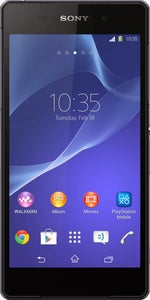










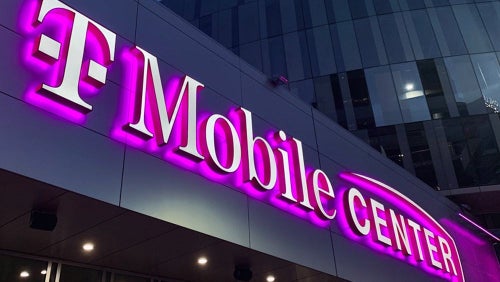
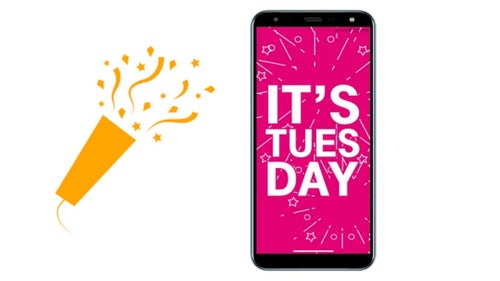
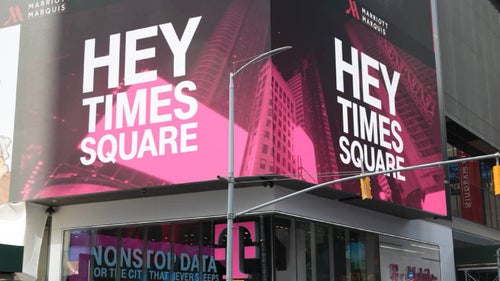

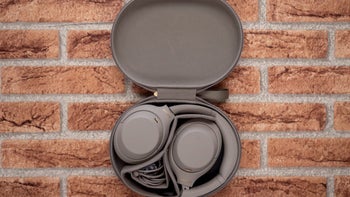
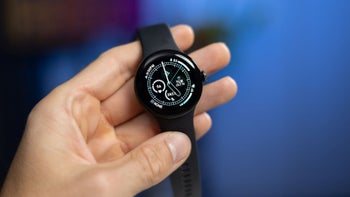
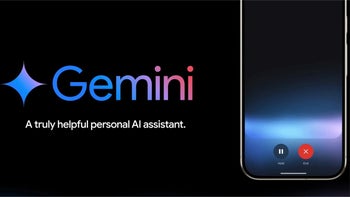
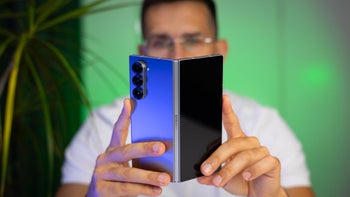
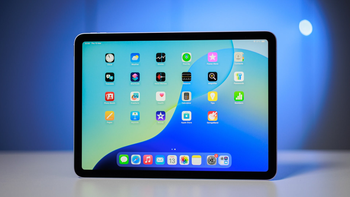






Things that are NOT allowed: